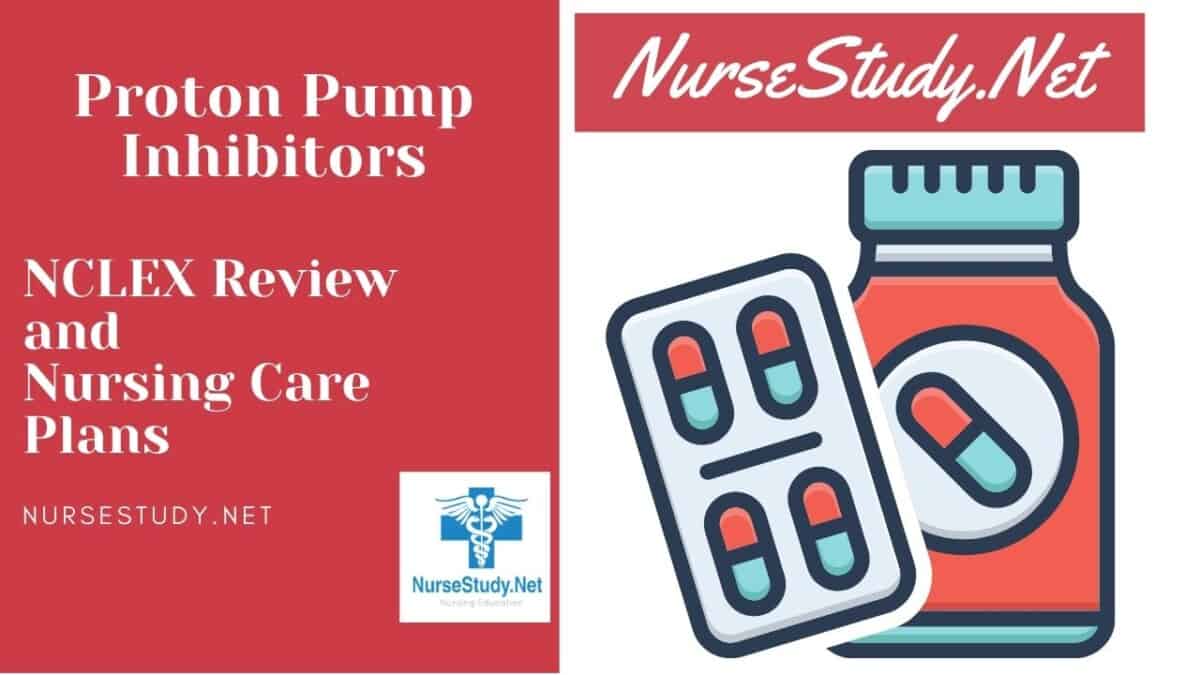Proton Pump Inhibitors (PPIs) are a class of medications that reduce gastric acid production by blocking the hydrogen/potassium adenosine triphosphatase enzyme system (H+/K+ ATPase) in the gastric parietal cells. They are the most potent inhibitors of gastric acid secretion available.
Generic names: Omeprazole, Esomeprazole, Lansoprazole, Dexlansoprazole, Pantoprazole, Rabeprazole
Brand names: Prilosec, Nexium, Prevacid, Dexilant, Protonix, Aciphex
Pharmacologic class: Proton pump inhibitors
Therapeutic class: Antisecretory agents, antiulcer agents
Mechanism of action: PPIs work by irreversibly binding to and inhibiting the H+/K+ ATPase pump (proton pump) in gastric parietal cells, leading to profound and long-lasting reduction of gastric acid production.
Indications for use:
- Gastroesophageal reflux disease (GERD)
- Erosive esophagitis
- Peptic ulcer disease
- Zollinger-Ellison syndrome
- H. pylori infection (as part of combination therapy)
- Prevention of NSAID-induced ulcers
- Stress ulcer prophylaxis
Precautions and contraindications:
- Hypersensitivity to any PPI
- Patients with liver dysfunction
- Pregnancy (Category C) and breastfeeding
- Elderly patients
- Patients with osteoporosis risk
- History of C. difficile infection
Drug Interactions
- Decreased absorption of medications requiring acidic pH (iron, calcium, vitamin B12)
- It may increase levels of digoxin, methotrexate, and warfarin
- May decrease the effectiveness of clopidogrel
- Antacids may decrease PPI absorption
- CYP2C19 inhibitors or inducers may affect PPI metabolism
Adverse Effects
- Headache and dizziness
- Nausea, diarrhea, abdominal pain
- Vitamin B12 deficiency
- Increased risk of bone fractures with long-term use
- Increased risk of C. difficile infection
- Hypomagnesemia
- Acute interstitial nephritis
- Increased risk of community-acquired pneumonia
- Potential increased risk of gastric cancer with long-term use
Administration Considerations
Available preparations: Delayed-release capsules, tablets, oral suspension, and IV formulations
Common adult dosages:
- GERD: 20-40 mg daily
- Peptic ulcer: 20-40 mg daily
- H. pylori treatment: 20-40 mg twice daily as part of combination therapy
Onset of action: 1-2 hours
Peak effect: 2-4 hours
Duration: 24-72 hours
Nursing Considerations for PPIs
Related Nursing Diagnoses
- Impaired comfort related to acid reflux or ulcer pain
- Risk for impaired nutrition related to decreased absorption of nutrients
- Risk for injury related to increased fracture risk with long-term use
- Knowledge deficit related to medication regimen
- Risk for infection related to altered gastric pH
Nursing Assessment
Assess for allergies to PPIs or their components
Evaluate presenting symptoms:
- Heartburn frequency and severity
- Epigastric pain
- Difficulty swallowing
- GI bleeding
Obtain comprehensive medication history:
- Over-the-counter medications
- Herbal supplements
- Other prescription medications
Assess risk factors:
- Osteoporosis
- Kidney disease
- Liver dysfunction
- History of C. difficile infection
- Monitor for signs of complications:
- Bone pain or fractures
- Signs of vitamin deficiency
- Kidney problems
- GI infections
Nursing Interventions
Administer PPIs appropriately:
- Give on an empty stomach
- Typically 30-60 minutes before first meal
- Space from antacids by at least 2 hours
Monitor for effectiveness:
- Reduction in acid reflux symptoms
- Improvement in ulcer symptoms
- Patient comfort level
Implement safety measures:
- Regular monitoring of serum magnesium levels
- Bone density screening for long-term users
- Vitamin B12 monitoring
- Renal function monitoring
Document and report:
- Medication effectiveness
- Adverse effects
- Patient compliance
- Laboratory results
Patient Teaching Associated with PPIs
Proper administration:
- Take medication at the same time each day
- Take on an empty stomach
- Do not crush or chew delayed-release formulations
- Complete the full course of therapy
Lifestyle modifications:
- Avoid trigger foods
- Maintain healthy weight
- Avoid lying down for 2-3 hours after meals
- Elevate the head of the bed
- Stop smoking
Warning signs to report:
- Severe diarrhea
- Muscle spasms or weakness
- Bone pain
- Unusual bleeding or bruising
- Severe abdominal pain
Long-term considerations:
- Regular medical follow-up
- Bone health maintenance
- Periodic review of the need for continued therapy
- Calcium and vitamin D supplementation if needed
Drug interactions:
- Discuss all medications with a healthcare provider
- Space certain medications apart from PPIs
- Avoid unnecessary over-the-counter medications
This is not an all-inclusive list of possible drug interactions, adverse effects, precautions, nursing considerations, or patient instructions. Please consult further with a pharmacist for complete information.
References
- Chen J, Yuan YC, Leontiadis GI, Howden CW. Recent safety concerns with proton pump inhibitors. J Clin Gastroenterol. 2012 Feb;46(2):93-114. doi: 10.1097/MCG.0b013e3182333820. PMID: 22227731.
- Strand, D. S., Kim, D., & Peura, D. A. (2022). 25 Years of Proton Pump Inhibitors: A Comprehensive Review. Gut and Liver, 15(1), 27-37. https://pmc.ncbi.nlm.nih.gov/articles/PMC5221858/
- Kinoshita, Y., Ishimura, N., & Ishihara, S. (2023). Advantages and Disadvantages of Long-term Proton Pump Inhibitor Use. Journal of Neurogastroenterology and Motility, 29(2), 148-159.
- Malfertheiner, P., Kandulski, A., & Venerito, M. (2022). Proton-pump inhibitors: Understanding the complications and risks. Nature Reviews Gastroenterology & Hepatology, 19(3), 166-180.

